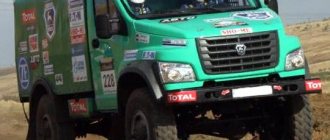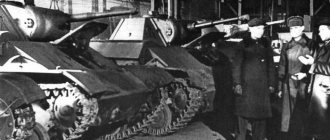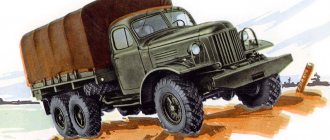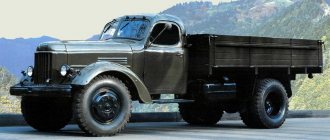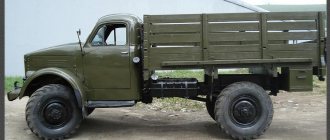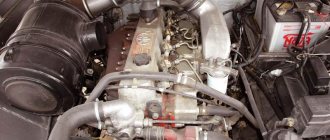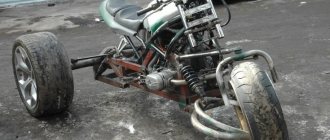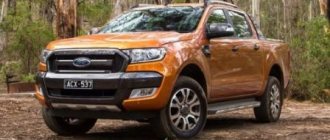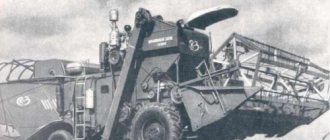The Gorky Automobile Plant has a rich history; over more than 80 years of its existence, a huge number of different cars have rolled off its assembly line. The model range includes both trucks and passenger cars. Some GAZ models have become legends of the Soviet and Russian automobile industry, and the serial production of some brands amounts to millions of copies.
Appearance of the legend of the Soviet automobile industry Volga GAZ 21
A little history
The story begins in 1932, when Gorky residents mastered the first GAZ AA truck and GAZ A passenger car. But the GAZ 1 model, which was popularly called “Emka,” gained particular popularity in the pre-war period. In the first post-war years, production of the famous “Victory” began, and the GAZ 51 brand was added to the truck range.
Since 1959, the first Volga GAZ 21 rolled off the factory assembly line, marking the beginning of a series of passenger cars. GAZ 51 also had many followers; there are even entire generations in this category. By the way, the new generation of trucks continues, but the Volgas have already ceased to exist.
The GAZ model range also includes SUVs.
Modification of the first Soviet SUV GAZ 67B.
They were mainly built on the basis of trucks (GAZ 66, GAZ 63, GAZ 3308 “Sadko”), but Gorky residents also produced all-terrain passenger cars, among them the legendary GAZ 69. In the future, Nizhny Novgorod residents did not develop such brands were engaged - the Ulyanovsk Automobile Plant took over the baton.
GAZ never stood still, and always found original design solutions. So in 1994, for the first time in Russia, the GAZ 3302 (“Gazelle”) light-duty truck was designed and put into production. This model marks the beginning of a new generation of stand-alone class vehicles, which are rather defined as commercial vehicles. This category includes not only light-duty trucks, but also minivans, all-metal vans, minibuses, and various special vehicles.
GAZ-69 is a Soviet light SUV that has become a cult classic.
Author: Andrey Zolotarevsky
… If you’re going to buy anything, it’s a GAZ-69, but, unfortunately, they don’t sell them.
A&B Strugatsky, “Monday begins on Saturday”
GAZ-69 is a car that has become a symbol of the era. Until now, its name resonates with warmth in the hearts of motorists of our vast Motherland. And for good reason. The legendary “goat” deserves the attention of even a person who is far from the automotive theme (like a convinced pedestrian, me). And the point here is not in technology or in the era, although not without this. This is our story of heroism. Success for what it is.
The design of the car is consistent with the times and looks elegant even now. Compared to its predecessor, the GAZ-67 command vehicle, smooth lines, rounded contours and aerodynamic slopes seem deliberately luxurious and redundant. It seems that producing such wings must be expensive for a manufacturer in a country just beginning to recover from the greatest war in history.
But everything has its own meaning and logic. The appearance, reminiscent of the highly refined GAZ-62 of both 1940 and 1952, made it possible to create a recognizable style for subsequent cars of the Gorky plant. If you compare the “sixty-nine” with the sixty-seventh model, it is clearly noticeable that the predecessor is noticeably smaller and tighter, but the 69th is only two hundred kilograms heavier. But it takes and carries twice as much cargo or people, farther and without breaking down as often. After all, the machine was designed taking into account the operating and repair experience of previous models and was made on a completely different technological base.
The legendary GAZ-67, although it had wings that were much simpler in design, was not an advantage in this case. They had to be stamped and assembled manually using bolts. Their maintainability did not radically neutralize their fragility. While the signature wings of the 69th, try to bend them. And the 67 itself, being a wartime vehicle, worked while new, and after literally a few weeks of intensive use (not even combat), the vehicle needed major repairs. Almost any removable part, unlike the newly designed frame, was quite delicate. In most cases, the body had to be lifted from the frame. In the cars that have survived to this day, almost all parts have been replaced with those produced in the post-war period.
It should be noted that the predecessor had a very distant relationship to imported cars - the size of the body frame, the distance between the wheels and the height of the hubs. It was decided to use only our own parts and assemblies - localized production. The decision to borrow dimensions turned out to be wrong: the command vehicle slid out of the ruts made by trucks in dirt roads, had a tendency to tip over and had insufficient carrying capacity, which led to the need to produce a new model. Modernization of the 67 was impossible due to the unification of its parts with other pre-war models, which by the middle of the war had become outdated and discontinued.
Here, for comparison, is the GAZ-67 - aka “Ivan-Willis”
The history of the creation of the model is simple at first glance. But this is only at first glance.
The task for the Gorky Plant to develop a light artillery tractor with wide potential for modification and modernization was officially received in February 1943. A meeting of designers of automobile and related factories of the People's Commissariat of Medium Engineering was held in Moscow, where the fundamental issue was decided - what cars to produce in the future. It is noteworthy that on February 2 the remnants of Paulus’s army surrendered and the Battle of Stalingrad was over, and on the 3rd they began to plan for post-war life. This meeting planned the development of the domestic automotive industry for several five-year periods ahead.
In specialized forums you can find references to the start of draft work on an initiative basis even before the war, some authors refer to statements by GAZ designers Grachev and Wasserman about the start of work in 1938, but the author of this article was unable to find exact data. Although the version is plausible, since the practice of loading temporarily idle designers with “small” themes, and this was the theme of a light passenger car for that time for a specialized giant. The designer leading the topic got sick or was on a business trip, his assistants, while there are no thematic target indications, are busy with “small things”. And the level of technical solutions looks from the 21st century to be quite achievable for the pre-war year. After all, design solutions even for the Niva were developed before the war. At first sight.
With a deeper study of the issue, this opinion will receive well-founded confirmation. The end of the 30s, the beginning of the 40s, this was the time of the breakthrough of industrial technologies in our country. Adjusted for the specifics of time, of course. And this is also the time of great designers. The general designer of GAZ, Vitaly Andreevich Grachev, was one of the great ones. They say that cosmonauts compared him with Korolev, and poets with Pasternak. For the ability to solve extremely complex problems.
Designer Vitaly Andreevich Grachev
In 1936, the famous Gorky-Pamir-Moscow motor rally began (a sporting event, not a lost road). Engineer Grachev, at just 33 years old, tested his invention - an all-terrain vehicle. The car not only passed the test of its creator, but also served as a technical assistance vehicle for the other participants in the race.
But upon their return, the participants faced interrogations and reprisals. The organizer of the rally, Smolich, and the director of GAZ, Dyakonov, were shot as enemies of the people. The participants of the rally were arrested, and Grachev also suffered. For refusing to participate in the production launch of a car of a crude design. Only the intervention of People's Commissar Ordzhonikidze saved the situation. Grachev was reinstated as an engineer. The plant built and began testing his GAZ-61 car. But the outbreak of war left its mark on everyone’s work, and Grachev was no exception. Its light machine-gun armored vehicles BA-64 and BA-64B replaced all-terrain cargo vehicles. And yet, working almost without sleep, under constant bombing by enemy aircraft, which completely destroyed the plant, Vitaly Andreevich produced a new car every year.
Truly, his cars were useful to both the private and the marshal. The GAZ-61 all-terrain vehicle was used by Zhukov, Konev, Voroshilov, and Rokossovsky. GAZ-64 is the first army command jeep. GAZ-67, the so-called “Ivan-Willis”, is externally similar to the American car supplied under lend-lease. GAZ-68, the only self-propelled wheeled gun in the world at that time. In 1954, on the initiative of G.K. Zhukov, a special design bureau was organized at the ZIL plant for Grachev. And for good reason.
The very first vehicle, a wheeled all-terrain vehicle, surpassed in cross-country ability any tracked vehicle existing at that time. ZIL-135L, a vehicle in the design of which plastic was used for the first time in the world, which allowed the truck to transport a load equal to its own weight, more than 9 tons. And the ZIL-E167 cargo snowmobile with surprisingly high cross-country ability was created in record time. Only a month and a half passed from receiving the technical specifications to testing. And that's not it!
An amphibious all-terrain vehicle with a jet engine, an aircraft chassis on a truck that allows it to maneuver no worse than a car, propellers and design work allow the all-terrain vehicle to sail at the speed of a boat and withstand a five-force storm.
I just couldn’t help but add a photo of the PEU-1R sample (R - Reactive). Here, for example, he is on the water, and the wheels are not visible.
Andrei Andreevich Voznesensky dedicated his poem “Zarev” to this man. A collection of poems, “The Light of a Distant Star” (to mark the 95th anniversary of the legendary Chief Designer), was dedicated to him. Many unique and unsurpassed vehicles were designed by Vitaly Andreevich, including the Marine Corps amphibians and ZIL-49042, which are still in service, ZIL-49061 “Blue Bird” - a passenger three-axle all-wheel drive amphibious vehicle of the search and rescue complex 490, for searching for landed cosmonauts and an auger-driven snow and swamp-going vehicle search and rescue complex 490 - ZIL-2906. In total, he designed 88 models and modifications of cars.
So, really, such people from the GAZ Lipgart design school could not, having received an order from the party, create a light artillery tractor?
For the first time the GAZ-69 was publicly mentioned by the chief designer of GAZ Lipgart on June 19, 1945. GAZ then held a presentation of two new cars in the Moscow Kremlin - the very successful GAZ-51 truck and the famous GAZ M-20 Pobeda. The chief designer mentioned that work on a new product, which he simply called a “tractor,” was being completed.
At that time, the Soviet Army was equipped with motor vehicles supplied under lend-lease. The GAZ-67 served as an alternative, but it was very small in size, and no modernization can cure this drawback.
But back in 1944, at the very beginning of mass production of the GAZ-67, one of its creators, designer Grigory Moiseevich Wasserman, began designing and developing a more modern and larger car. Therefore, when Lipgard mentioned the GAZ-69 in a conversation with Stalin, the general idea of the “tractor” had already been formulated.
The new car inherited from its predecessor, the GAZ-67, only the mocking nickname “Kozlik”; the outdated component base was not transferred to the model. And the “bouncing” character is a consequence of the biaxial design and the length of the base. It was impractical to improve the model by adding a third axis for the sake of comfort in those days.
On board the first GAZ-69 produced in 1947, the inscription “Worker” was stamped, but the military assigned the model the ATK-L index (light artillery tractor), and the factory index was written as GAZ-69-76, the second digit was the body code , a practice borrowed from the Americans during lend-lease.
In 1948, comparative tests of the GAZ-69 and GAZ-67B were carried out both on the highway and off-road. It turned out that the new car consumes significantly less fuel with a significantly higher curb weight, but the cross-country ability of the old car is slightly better. The test results were sufficient to order a pilot batch; the vehicle was suitable for the military in its original form, since it was not intended to be used directly on the front line.
The start of serial production was disrupted by politics... The campaign to combat “cosmopolitanism” led to the dismissal of the chief designer of the plant, Lipgart, and many other engineering personnel. GAZ-69 hit the assembly line only in August 1953.
Over the past time, the GAZ team has modernized the car, increasing the engine power from the Pobeda to 55 horsepower and developing a five-door version under the designation GAZ-69A.
Due to the workload of GAZ with mass orders and the growing demand for the new SUV, the production of the jeep was transferred to the Ulyanovsk Automobile Plant. Along with the necessary documentation, a whole design team branched out to Ulyanovsk.
By the end of 1954, the first six cars were assembled at UAZ. True, it was a “screwdriver assembly”, but the GAZ-69 was the first peacetime car model produced by UAZ after the war. Therefore, mass production from our own parts was established only after two years.
The model was mass-produced for 20 years. During this time, the design of the model received many modifications - specialized vehicles were intended to solve both military problems and the national economy. The model was exported to 60 countries and, accordingly, received local modifications. It is curious that Iceland, having fallen under British sanctions, was able to acquire a Soviet all-terrain vehicle and began to modernize it, demonstrating its automotive independence. In North Korea, the car received a local name, translated (by an automatic translator) as “Unsurpassed Reliability.”
Technical characteristics of the GAZ-69 and some features of the model
| Machine weight | 1.525 tons |
| Load capacity | 650 kg |
| Wheelbase | 2.3 m |
| Machine length | 3.85 m |
| Height | 2.03 m |
| Width | 1.75 m |
| Clearance | 0.21 m |
| Front and rear track width | 1.44 m |
| Maximum highway speed | 90 km/h without a trailer, up to 80 km/h with a trailer |
| Fuel reserve | 48 + 27 liters in main and additional tanks |
For most car enthusiasts, the GAZ-69 is, first of all, the immediate predecessor of the UAZ-450, the classic “Loaf”, produced by the Ulyanovsk plant since January 1958. And here are the design features that are unusual for our contemporaries, and sometimes simply curious. The car does not start with a key, but with a button on the floor. There are no seat belts; they had not yet been invented at the time of the model’s release. Airbag? Haven't heard. Due to the lack of side windows (the doors are without glazing, they just exist), a special cutout with a flap was made in the awning - for presenting documents at traffic police posts and checkpoints of Soviet institutions.
From impressions. Crazy vibration load. Shaking, as if you were sitting on a motor. It’s still acceptable to sit in the front seats, but on the rear benches you have to figure out something to hold on to. Every bump turns into an attraction. The steering wheel is quite light even by modern standards, although the model does not have power steering. The speedometer needle jumping while moving is generally nostalgic.
The engine is a simplified and modified GAZ engine from Pobeda. The main original parts remain the transfer case and axles from the ZIM limousine. The first gear is not synchronized, but there is a synchronizer for the second and third gears. The windshield frame is lowered, the car can be easily and quickly reduced in height. Up to one and a half meters. After all, the GAZ-69 is also flying! More precisely, parachuted in the landing version. The glass itself also rises from the frame - to make it easier to drive with a closed awning on dusty roads. The transfer case drain plug is located inside the traverse, in the transverse frame.
The main feature is the original suitability for off-road use. Powerful hooks on the front bumper, a shovel and a crowbar on the sides. And very long suspension travel. Same as for a car.
Use during combat
The GAZ-69 was widely used in the army, however, we have little information about its participation in actual combat operations. The vehicles were used by the command staff of the Soviet Airborne Forces during the suppression of the rebellion in Hungary in 1956. There is no doubt that GAZ-69s were also in Czechoslovakia in 1968.
By the time the war in Afghanistan began, the GAZ-69 Soviet Army had already rearmed with the UAZ-469.
Due to the paucity of sources, the most striking page of the military biography of the GAZ-69 is still its participation in the Arab-Israeli conflict. In the usual anti-tank quality. The first use of the corresponding modification 2P26 was noted during the Six-Day War, when “Bumblebee” missiles fired from a installation mounted on a Soviet jeep managed to destroy up to 10 Israeli tanks.
Repeatedly 2P26 o in 1973. only the infantry ATGM “Malyutka” could compete with this converted GAZ-69 vehicle in terms of the number of armored targets hit at that time.
Several (I have seen mentions of 12) 2P26 vehicles were received by the IDF as trophies and are used to this day.
2P26 and others
The vehicle was in service with Russian troops until 1994.
Pros and cons of GAZ-69
The main advantages of the GAZ-69 car are its unpretentiousness, endurance and excellent cross-country ability.
In addition, it has other advantages:
- Simplicity of design and its component compatibility with other Gorky cars;
- Much more convenient and comfortable interior compared to the GAZ-67;
- The versatility of use, the possibilities for creating different options are practically unlimited;
- Command light on the instrument panel in front of the passenger seat. Just in front of the brutal arc handle, so that enemies don’t spot it in the night. Aesthetics, again;
- It is allowed to equip the car with a diesel engine instead of a gasoline engine. This, of course, already applies to tuning, however, the very presence of such an opportunity is a significant plus.
Among the minuses, we can note the primitiveness of the canvas top of the body, stiff suspension, poor sound insulation of the interior, and clearly insufficient engine power by modern standards. As is easy to see, all these disadvantages are due either to the concept of the machine itself or to the time of its creation.
Operation on the road is a different matter. Five hundred kilometers and the pins should be syringed. Routine work should be carried out according to our own algorithm at 500, 1,000, 3,000 and 6,000 kilometers.
The brake lights are triggered automatically by the pressure in the system, and therefore with a delay.
The right fuel tank, with a filler neck, is under the passenger seat, and the left one is under the bottom. But its upper side rests against... a wooden block under the bottom of the car, so that the tank can be tightened with clamps to the body.
Comfort - compared to the GAZ-67, the ride of the car is very soft. Evidence of generals falling out on the move has not survived to this day. The shaking is due to the fact that the body sits rigidly on the frame, without any spacers. But the towing device for transporting an artillery piece or trailer has a spring damper on the inside of the rear bumper. The gun shakes less during hard braking.
The shock absorbers are not telescopic, but lever type. 11 leaf springs are still fondly remembered by blacksmiths - a thing!
It is noteworthy that the GAZ-69 was delayed on the assembly line for a prosaic reason - a lack of funds from the Ministry of Automotive Industry in the late 70s. Still the same sanctions, still the same Western “partners”. The 1980 Olympics, which promised powerful prospects, due to bans on tourists from capitalist countries visiting it, instead of the expected profits, with the efforts of the country's best specialists, brought losses of only 140 million Soviet rubles. The drought that broke out in the late 70s and early 80s, sources about which are so scarce on the Internet, also contributed to budget losses. That's why a lobby has formed in the automotive industry to keep the old man on the assembly line.
Only a decision at the very top of the government apparatus made it possible to remove the GAZ-69 from production and replace it with the UAZ-469. A whole special operation was carried out to deliver experimental machines to Moscow and demonstrate them to Leonid Ilyich.
Out of a total circulation of 600 thousand units (over 20 years), about 150 thousand GAZ-69 were exported. Buyers received not only equipment, but also jobs to service it, and, to be honest, modifications. Almost each of the 12 operating countries added something of their own to the design. For example, the Romanian ARO-24, -244 Cross lender, in comfortable bodies for those times.
GAZ-69 in the 21st century
Why are GAZ cars called construction kits for adults? Because they are easier to assemble and disassemble than to break. And any straightforward motorist can both repair and modify (upgrade) his “swallow” in the conditions of a decent garage. Therefore, conversions of domestic cars arouse persistent interest; almost every expert can confidently say: “I could do no worse!”
So more and more new cars are being produced with improved characteristics compared to the original ones: farming, rescue, tourist, huntsman and, of course, racing, for off-road.
Finally, it remains to pay tribute to our engineers and designers of the recent past, who created a whole school of automotive technology creators, a galaxy of designers and an assortment of models for subsequent generations.
Light buggy “Sarmat”, did it seem recognizable to you too?
Author: Andrey Zolotarevsky
Original
Commercial vehicles GAZ
In connection with the development of private entrepreneurship and small businesses in the country, maneuverable and fast vehicles were needed that could deliver small quantities of cargo and transport passengers comfortably over any distance.
Curtain cargo gazelle
The first-born in the series of light-duty vehicles was the GAZ 3302 “Gazelle” flatbed truck with a carrying capacity of 1.5 tons.
It is worth noting that the last “one and a half” was mass-produced at the car plant even before the war. The LCV class of cars has long been popular in the West, and with the advent of market relations in Russia, it has become in demand in our country. "Gazelle" began to be produced in various body styles:
- 32213 – minibus;
- 2705 – all-metal van;
- Z3023 “Farmer” – 7-seater flatbed truck.
Vans were installed on the Gazelle chassis and tow trucks were created. At the end of 1998, the car plant began production of more comfortable and smaller cars of the Sobol series. The maximum carrying capacity of such commercial vehicles does not exceed 1 ton.
Design option for the GAZ Sobol modification.
Body options for the models are also different:
- 2752 – all-metal 3 or 7-seater van;
- 2217 “Barguzin” – minivan (6 passenger seats);
- 22171 – 10-seater minibus;
- 2310 – flatbed truck.
Modernization
The main customer for SUVs was the USSR Ministry of Defense, so the vehicles remained virtually unchanged during the production process. The only modernization was carried out at the beginning of 1970. The changes affected the glazing of the awning and introduced two cylinders in the front brake mechanisms.
The bridges were equipped with reinforced differentials, and a “mass” switch was introduced in the electrical system.
The most noticeable change was the ability to disable front wheel drive. The modernized SUVs received the designations UAZ-69-68 and 69A-68 (or 69M and 69AM).
Rejection of American ideas
Soviet designers did not dwell on their achievements, opening a new stage in the history of the brand. And it began with the release of a new M-1 passenger car. We remember that an agreement was previously concluded with the Americans, according to which the car should have a prototype with a Ford character. This was not part of the designers' plans, so the car was not much like its American friend. The differences were in the following elements:
- engine power increased to 50 horses;
- the chassis consisted of a frame of increased strength and a suspension with a modified shape (not two transverse springs, but four);
- spoked wheels were replaced with stamped disc wheels with larger tires;
- the front part of the body has become more enlarged;
- the frame has been lengthened;
- proportions have improved;
- the hood wings and radiator became expressive and interesting.
Such changes made the GAZ-M1 more durable and durable.
War.
During the Great Patriotic War, the plant, like many enterprises in the Soviet Union, was reoriented to produce products for the front. It was subjected to destructive air raids by fascist aviation 25 times, during which fifty production buildings, nine thousand meters of conveyor lines, and about six thousand pieces of production equipment were damaged and destroyed. It should be noted that the range of products was extensive: all-terrain vehicles "GAZ - 67" and "GAZ - 64", armored vehicles "BA - 64" and "BA - 64B", light tanks "T - 60" and "T - 70", cargo vehicles, self-propelled guns and other military equipment and other equipment. During all the years of the war, the enterprise produced: cars - 176,221, tanks - 12,000, more than 9,000 self-propelled guns, mortars - 24,000, car engines - 232,000, shells for the Katyusha rocket mortar - 30,000.
The government of the Soviet Union highly appreciated the enterprise's contribution to the victory over Nazi Germany, awarding it the Order of the Red Banner, Lenin and the Order of the Patriotic War, 1st degree.
